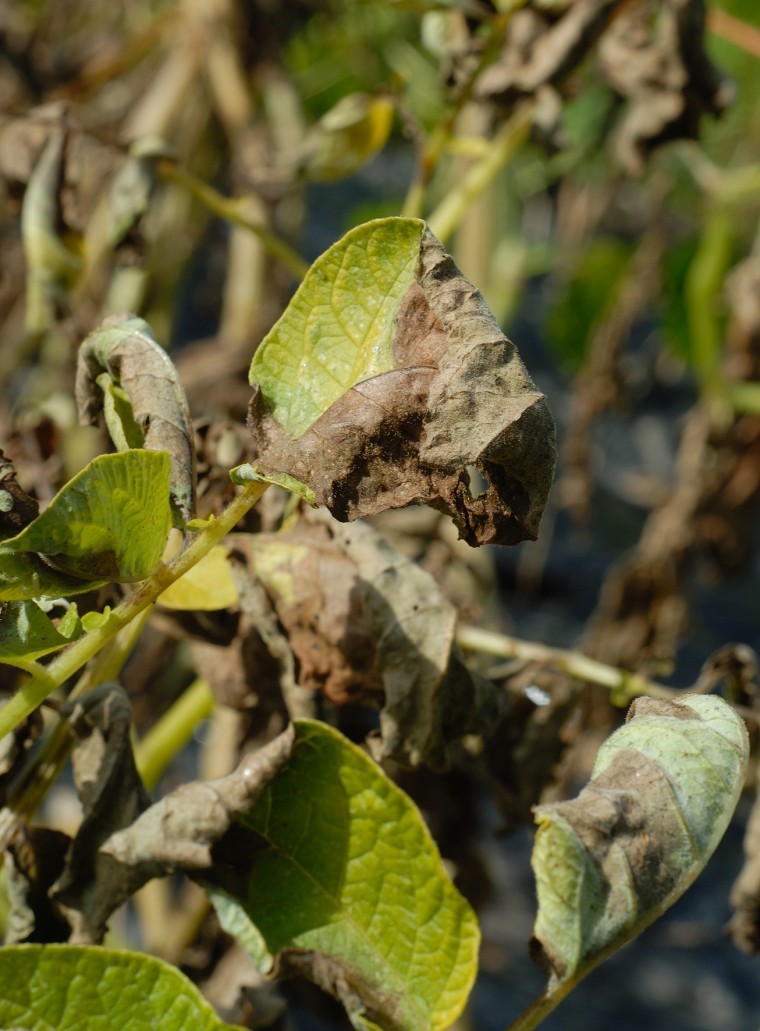Potato crops have enjoyed extremely good growing conditions across most of the UK this season – providing there has been ample irrigation available and they have been effectively protected from the extended periods of extremely high blight pressure.
As a result, many crops have reached the optimum 80 to 85 mm market-sized tubers several weeks ahead of expected. Growers now face the challenge of stopping further tuber growth beneath a vigorous crop canopy, reports Shropshire-based Syngenta potato specialist, Rob Farrow.
“With this season’s big crops, an initial Reglone application can quickly burn off the tops to help manage tuber size more effectively and reliably,” he advised. “It will also expose the stems for a second application to complete desiccation before harvest.”
Interval timing
Mr Farrow advocated the initial treatment should be applied at a low rate of one-litre per hectare, which is fully supported by Syngenta, whatever the soil conditions. The follow-up treatment can be tailored at two to four litres per hectare, depending on the remaining stems and green haulm.
“One of the most frequently asked questions is ‘when do I make the second spray in a sequential desiccation programme?’.
“From experience the temptation is often to go in too quickly. You need to give time for the leaf canopy to die back and stems begin to go over, especially with big crops,” he added. “In most instances, five to seven days will give better results and achieve a more complete kill of haulm with the two-spray Reglone programme.”
For best results the initial treatment in vigorous crops should be applied at 400l/ha using the angled Syngenta Potato Nozzle to achieve good coverage and canopy penetration, highlighted Mr Farrow. The second spray water volume can be reduced to 200 l/ha, again using the angled nozzles for enhanced all round coverage of stems.
Maintain blight protection
This year’s very high blight pressure and widespread reports of infection in unprotected crops, volunteer potatoes and gardens means growers must protect tubers right through to harvest, warned Rob Farrow.
Fortuitously, the Reglone sequential desiccation programme interval also fits with the Shirlan blight spray timing at appropriate rates. That enables the inclusion of effective tuber blight protection in both desiccation sprays, to minimise the risk of blight spores moving through the soil to infect tubers, he added.
Research has also shown that Reglone does have a direct effect on blight spores. Furthermore, the rapid defoliation and removal of leaf and haulm deprives blight of the green vegetative material on which it depends, reducing the risk of further development and spore production that threatens tuber infection.




